1993
Type of resources
Topics
Keywords
Contact for the resource
Provided by
Years
Formats
Representation types
Update frequencies
Scale
-
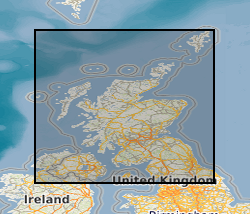
This dataset (GSE_SPECIMENS) is an index of the specimens and palaeontological slides held in the Type and Stratigraphical (T&S) Collection of Scotland and Northern England. This index along with GSE_REFERENCES (List Of Specimens From The UK (North) Type And Stratigraphical Collection And Related Publications) and to some extent SMITH_GSE (Index To Specimens Transferred From The John Smith Collection To The UK (North) Type and Stratigraphical Collection) are the digital equivalents of the analogue card index (held in BGS Edinburgh). The latter contains c.16k records, of which perhaps 25% have been transcribed. The sporadically growing T&S Collection (which is derived from the Survey Collection) comprises some 16k specimens. About 11k are housed at BGS Keyworth and c.5k remain at BGS Edinburgh. The specimens are individually registered in 5 leather bound volumes. These are held in BGS Keyworth, but equivalent information (microfilm and paper records) is held in BGS Edinburgh. For each specimen, the MS Access database MTD_GSE_SPECS provides a link with the Survey Collection, gives nomenclatural, taxonomical, geographical and stratigraphical information, an indication on where the fossil is housed, and any comments, perhaps on the state of preservation.
-
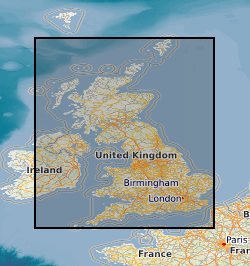
The Lexicon of Named Rock Units provides definitions of lithostratigraphic, lithodemic, and litho-morpho-genetic geological units of the United Kingdom and its associated continental shelf. The Lexicon focuses mainly on units of Member, Formation, Group and higher rank (and equivalents) but it also includes information on some units of lesser rank, notably economically important coal seams and laterally extensive marine bands. It includes superficial and bedrock units. It includes synonyms and other names not currently recognised by the BGS or regarded as obsolete. Full Lexicon entries include geological unit name, a persistent unique identifier, map code, currency, rank, parent unit and rank, age, lithology, definitions of boundaries, thickness, previous and alternative names, geographical extent, type localities, and bibliographical references.
-
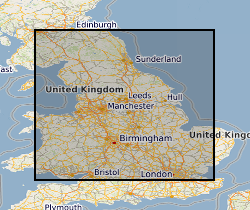
Soil samples collected in urban areas throughout the UK are analysed for their major and trace element geochemistry, their pH and organic matter content. Samples are collected at two depths; 0-15cm and 35-45cm at sites selected using a stratified, random design. The data can be used to identify and prioritize contaminated sites. In 1993, the Geochemical Baseline Survey Of The Environm (G-BASE) rural geochemical mapping programme was extended to include sampling in urban areas and to date around 22 urban centres have been sampled. Data is available on key inorganic contaminants including Cr, Cu, Cd, Ni, As, Pb, Zn, Sn and Sb. Results have been standardised to ensure seamless joins between geochemical sampling campaigns. Urban centres are selected in areas where rural sampling is undertaken or where the BGS urban programme is active. Urban centres will continue to be sampled until completion of the rural programme, scheduled for 2015.
-
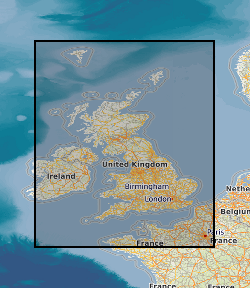
This dataset represents a project-based collection of seismic interpretations of 2D and 3D commercial seismic reflection data. These data are integrated in a relational database in ORACLE in a data model called OpenWorks. Well log data, stratigraphic, velocity and well and seismic location data are also held in the database. Data interpretations are held within project indices by interpreter. Interpretations include faults and lithostratigraphic horizons. All data are commercial-in-confidence and cannot be supplied to any third party without the explicit permission of the customer or supplier.
-
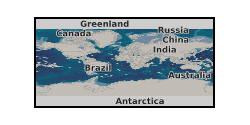
Over 22000 km of corrected aeromagnetic total intensity data from various surveys in offshore petroleum areas in UK Continental Shelf and overseas collected to assist directional drilling. Line separation is 2 km and flight altitude is 80 m above sea level and navigation is by GPS (Global Positioning System). Some surveys have been bought or commissioned on an exclusive basis by BGS and can be used without further ado, others require permission sought from the aeromagnetic survey company or end-client.
-
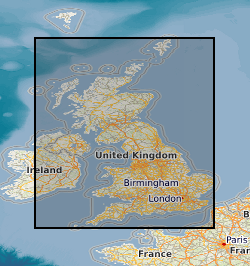
Laboratory results for the analysis of soil samples collected from urban areas during the baseline geochemical mapping programme of Britain. Sample sites are described on field slips. Chemical results are subjected to high level of quality control in the laboratory. Results are the raw data processed (standardisation and normalisation) to give seamless geochemical images and the value added G-BASE (Geochemical Baseline Survey of the Environment) data in the BGS geochemistry database.
-
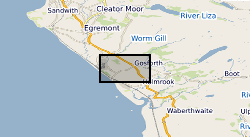
The Nirex Digital Geoscience Database (NDGD) holds extensive sets of data describing geoscientific, geographical, hydrogeological and logistical aspects of the Sellafield area in western Cumbria region. Some datasets comprise unmodified field data (as collected, measured or observed in the field). Others include values assessed during laboratory analysis or testing. Derived or interpolated information, resulting from modelling activity or the integration of several datasets, also accounts for a significant portion of the NDGD holding. The data consists of mainly borehole derived information including Borehole location and survey information, Sample location information, Logistics, Geological, geophysical (including borehole geophysical logs) and geotechnical borehole Geology datasets and Hydrological, hydrogeological and hydrochemical borehole datasets (though information from the down-hole monitoring strings and most groundwater related information is not held in the NDGD). The NDGD holds all of the raw and processed digital data arising from the Nirex (Nuclear Industry Radioactive Waste Executive) Sellafield Geological investigations boreholes drilled during their investigation programme into the suitability of Sellafield as a site for the disposal of intermediate and long-lived low level radioactive waste between 1989 and 1997. The ownership of Nirex (Nuclear Industry Radioactive Waste Executive) was transferred from the nuclear industry to the UK Government departments DEFRA and DTI in April 2005, and then to the UK's Nuclear Decommissioning Authority (NDA) in November 2006.
-
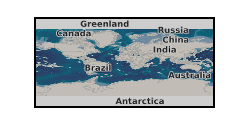
In January 1993, as part of the Joule II Non-nuclear Energy Research Programme, the European Commission initiated a two year study of the potential for the disposal of industrial quantifies of carbon dioxide underground, with a view to reducing emissions to the atmosphere. The participants in the study were the British Geological Survey (UK), TNO Institute of Applied Geoscience (The Netherlands), BRGM (France), CRE Group Ltd (UK), IKU Petroleum Research (Norway), RWE AG (Germany), University of Sunderland Renewable Energy Centre (UK) and Statoil (Norway). The objective of the study was to examine whether carbon dioxide emissions from large point sources such as power stations, could be disposed of safely, economically and with no adverse effects on man and the environment. Project No. CT92-0031.
-
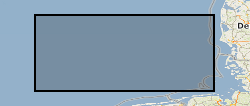
MONA LISA (Marine and Onshore North Sea Acquisition for Lithospheric Seismic Analysis) seismic data was acquired by BIRPS (the British Institutions Reflection Profiling Syndicate) across the Ringkobing-Fyn High of the central North Sea were designed to study the crust near a hypothesized Caledonian age triple junction associated with the colliding continental crust of Laurentia, Avalonia (Gondwanaland) and Baltica. The specific target was the eastward continuation of the Caledonian Front (Iapetus Suture), as previously recognised on NEC (North East Coast line), MOBIL (Measurements over Basins to Image Lithosphere), NSDP (North Sea Deep Profile) and BABEL (Baltic and Bothnian Echoes from the Lithosphere) profiles, in northern Europe. 1112 km of data were acquired, recorded to 26 s two-way time.
-
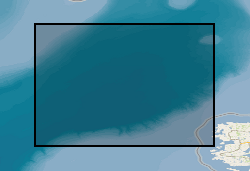
WESTLINE was acquired by BIRPS (the British Institutions Reflection Profiling Syndicate). The seismic data image the faulted conjugate margins of the Rockall Trough and the intrabasinal sediments. The seismic data were shot to 18 s two-way time along a single 450 km-long transect.
 BGS Data Catalogue
BGS Data Catalogue